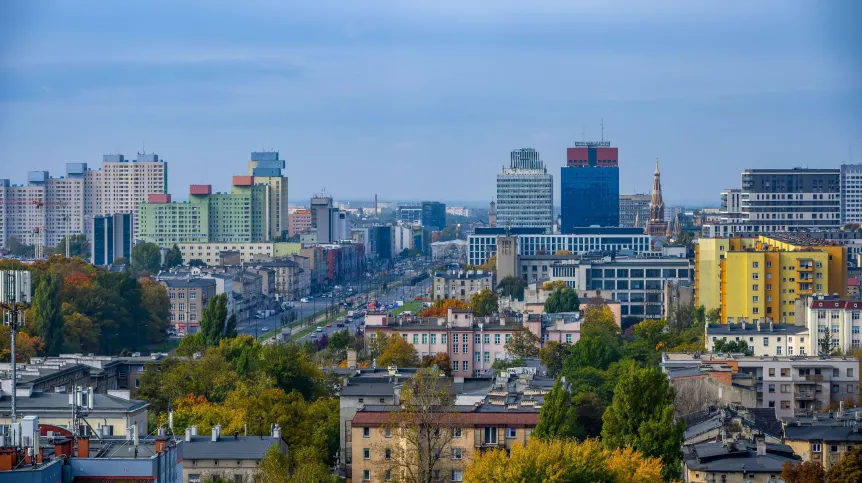
No other city in Europe had such a dynamic development as Łódź, says historian Professor Jarosław Kita.
On the occasion of the 600th anniversary of granting city rights to Łódź, a team of over a hundred researchers (mainly from the University of Łódź), representing such fields as history, archaeology, history of art, ethnology, linguistics and literary studies, is preparing a five-volume monograph 'Łódź through the ages'. Its first volume, devoted to the history of the city until 1820, will be published on July 21.
'The monograph contains a lot of new findings. Remember that several decades have passed since the first research on the period of old, agricultural Łódź. During this time, science has advanced, we have access to new documents, and there are slightly different interpretations of previously known texts. Our knowledge about Łódź before 1820 is now much more extensive', says the chairman of the editorial committee of the monograph, Professor Jarosław Kita from the Institute of History of the University of Łódź.
According to the historian, no other city in Europe has had such an incredible development dynamics as Łódź. 'This pace does not match the European continent, rather the American one, where large cities were built on bare soil over the course of several decades. The main city-forming factor in Łódź was the industry, especially the textile industry,' he says.
Although this year marks the official 600th anniversary, according to historians its proper 'career' began after 1820. According to the editor of the first volume, Professor Tomasz Grabarczyk, previously it functioned as a small town, located between forests and inhabited by a small number of residents.
At the end of January 1821, a document was issued that elevated the small town near Zgierz and Brzeziny - as it was then said - to the rank of an industrial city. 'The phenomenal career of Łódź began' in 1820 it had a population of 767, and before the outbreak of the Great War, in 1913, it exceeded half a million people,’ says Professor Kita.
He adds that at the end of the 18th century, Łódź almost lost its city rights, because after the Second Partition, the Prussians considered the liquidation of this type of agricultural cities, not much different from villages. Łódź was one of many centres densely located on the outskirts of the property of the bishops of Włocławek, and off the main trade routes - which was not conducive to development.
The first impulse for expansion occurred in the period of the Duchy of Warsaw, also thanks to the influx of Jewish people, who considered Łódź a good place to develop trade. Glassworks were also established around the city.
'Łódź is a city of many cultures, throughout the 19th century and in the interwar period it learned to respect other nations. Maybe that is why so many refugees from across the eastern border come to the city today. History has come full circle - Łódź is becoming a multicultural city again,’ says Professor Kita.
The historian also mentions the recent excavations carried out in the Old Market Square. He explains that they were aimed at clarifying several issues related to the foundation of the city.
'Researchers of the history of old Łódź argue about where the beginnings of the city really took place. There is talk about +the city on Łódka+, but the old Łódź was built on a tributary of this river - Ostroga. That name was even considered as a possible name for the city,’ he says.
In his opinion, the monograph is a popular science work that can be read by every inhabitant of Łódź. Accessibility is enhanced by capsules, separated in the text and containing a lot of trivia; their purpose is to encourage readers to read longer chapters.
The next volume of the Łódź monograph will be published later this year (the premiere is scheduled for November 11, on the anniversary of regaining independence), the third will be published in March next year, and the fourth will close the anniversary year of Łódź in July 2024. Volume five will be a supplement.
The following institutions are involved in the creation of this monumental work: the Museum of the City of Łódź the Museum of Independence Traditions, the State Archives and the City Library in Łódź which is the co-editor for the University of Łódź Publishing House in this project.
It is also accompanied by a series of podcasts available on the website of the University of Łódź Publishing House. These are conversations between the well-known Łódź tour guide Justyna Tomaszewska and the authors of the five-volume publication. So far, episodes devoted to the location of the city and medieval Łódź, the architecture of industrial Łódź and archaeological research have been published; plans include podcasts about the Łódź dialect, city names and agricultural Łódź. (PAP)
PAP - Science in Poland, Agnieszka Grzelak-Michałowska
agm/ jann/ kap/
tr. RL













